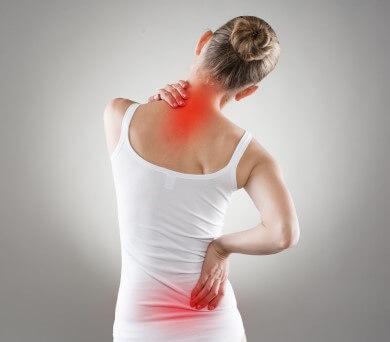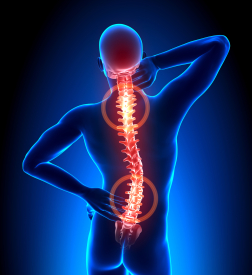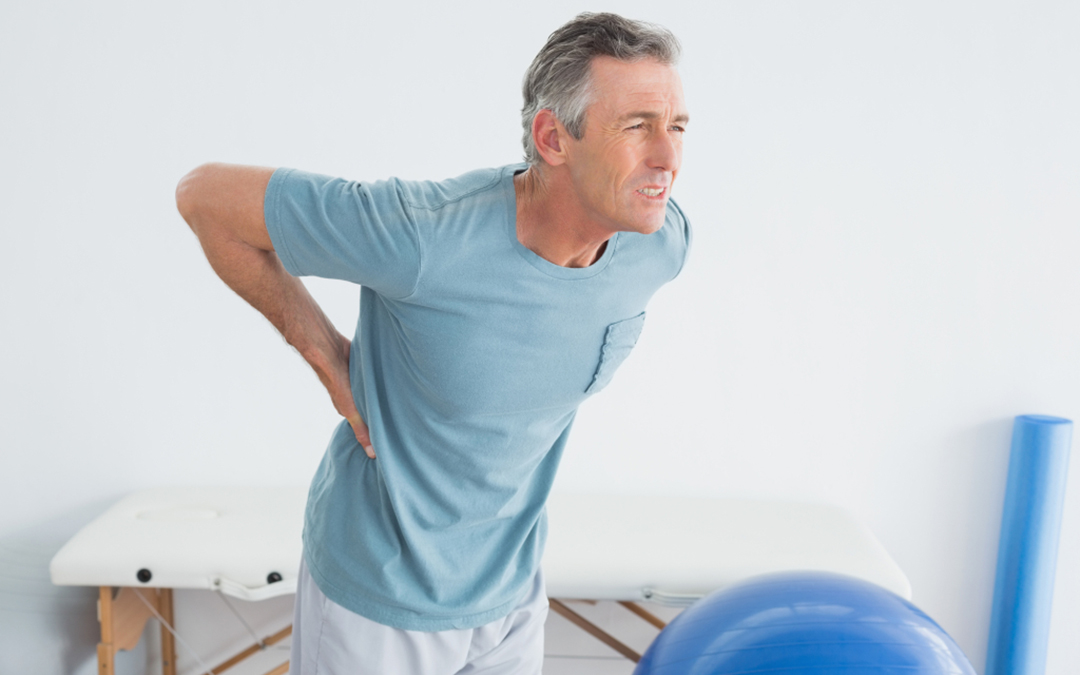Eighty percent of Americans will experience back pain at some point in their lives. Back pain affects half of working Americans. Sources estimate that there are over 206 million people in the U.S. workforce. That means over 103 million people will at some point suffer from back pain. That is a staggering number!

Here are a few more interesting facts about back pain:
- Low back pain is the single leading cause of disability worldwide, according to the Global Burden of Disease 2010.
- Back pain is one of the most common reasons for missed work. In fact, back pain is the second most common reason for visits to the doctor’s office, outnumbered only by upper-respiratory infections.
- One-half of all working Americans admit to having back pain symptoms each year.
- Experts estimate that as much as 80% of the population will experience a back problem at some time in their lives.
- Most cases of back pain are mechanical or non-organic—meaning they are not caused by serious conditions, such as inflammatory arthritis, infection, fracture or cancer.
- Americans spend at least $50 billion each year on back pain—and that’s just for the more easily identified costs.
These facts come from the American Chiropractic Association.
As a licensed massage therapist, I see a lot of clients with back pain. Most of the time I am able to help them relieve the pain and resume normal activities. Often clients get some immediate relief, some times it may take a number of sessions to maintain a comfortable back. Over the years I have noticed that we often set ourselves up for back pain and there are a number of small but important modifications we can make in our lives to reduce back pain and even reduce the risk of back pain in some cases!
Here are some of the small actions we can take today to reduce back pain and improve the quality of our lives.
#5. A healthy back starts from the ground up. This means wearing good supportive shoes and maybe even insoles or orthotics. Having our feet in proper position and feeling comfortable is the best start to reduce the risk of back pain. Uncomfortable shoes can cause foot/heel pain, and this pain can set the stage for a series of compensation patterns that change your gate and posture, and ultimately contribute to musculoskeletal pain in the legs, back and elsewhere.

Are your shoes road weary? Worn shoes can cause musculoskeletal pain that leads to back pain.
If you are wearing the same shoes every day for work, you probably need to replace them within three to six months, perhaps sooner if you are standing / walking a great deal. The same holds true for athletic shoes. Really, any shoe that is being exposed to regular work should be examined carefully for wear and replaced at the first sign of discomfort or wear.
#4. It amazes me the number of women and men who carry boat anchors over their shoulders! I am being facetious, but I am trying to make a point here! So many people today are carrying computer bags, gym bags and oversize purses that weigh too much. Remember a 20 pound weight exerts more than 20 pounds of force if it is being carried over your shoulder on a two inch wide strap. Take a look at what you are carrying around every day. Do you really need to carry it all?

A recipe for neck and back pain: carrying a heavy bag over the shoulder, cradling a phone between shoulder and ear, and having neck and head position out of correct alignment.
If so, maybe you should consider a rolling bag. Years ago my employer had employees parking in a deck located several blocks from our office building. I had no choice but to buy and use a rolling bag. Within a couple of weeks I noticed that I had less fatigue and soreness at the end of the day. I never went back to using a shoulder bag. Even though I left Corporate America over 14 years ago, I still have a rolling bag for those occasions when I know I will be dragging a lot of supplies with me. I even bought a rolling cart for my massage table to make sure I don’t fall into the trap of carrying my table from a shoulder strap. Do your back a favor and stop carrying heavy bags with your shoulders!

And guys if you are still carrying a gigantic wallet in your rear pocket, you are crooked. A thick wallet or any other thick object in a back pocket tips your pelvis when you are sitting. A crooked pelvis puts uneven pressure on surrounding muscle groups and changes the shape of the back. It is impossible to sit up straight and even with a level pelvis when there is too much in your pockets.
#3. Now let’s talk about one of my favorite subjects: sleep. Good quality sleep can be a huge catalyst for an improved life. Some day I will tell you about sleep apnea, but today we are talking about back pain and how to prevent it. If you have ever slept on a poor mattress and woken up with a backache, you know how important good spinal support is for the back. If you suffer from back pain, a bad mattress makes matters worse. If you don’t have back pain, but sleep on a poor mattress, you will eventually get back pain.

A supportive mattress and pillow help keep the spine in correct alignment. This provides better quality sleep and reduces risk of back pain.
The spine needs to be in alignment, from the base of your skull to your tailbone. This means having a supportive mattress (and pillow) that allows you to feel supported with your spine fully aligned. Pillows that are too high or too low create incorrect curvature of the spine and can also contribute to back pain, to say nothing of neck pain too!

Looking down strains neck muscles and upper back muscles. This position also allows the front muscle line to contract, making it more difficult to keep healthy alignment.
#2. There are several habits we also need to consider as contributors to back pain and a couple of these are related to our dependence on technology. Two of the most common habits that contribute to neck and back pain are cradling a phone between the shoulder and ear, and looking down at screens. It is so tempting to try to multi-task when we are in a hurry. Cradling the phone between shoulder and ear frees our hands to do important things, right? This is a sure path to a sore neck or upper back. With the advent of ear buds, better head sets, and blue tooth, there are plenty of other options. Your neck and back will thank you for it.
#1. Being careful of our seated and standing posture can produce dramatic improvements in our overall well being and reduce back pain. We are often not aware of how much our posture has changed over time. Check how you are sitting in your chair right now. Is your spine straight, chest lifted, head centered over shoulders? Or are you slouching, with your head forward of your body? Checking in and taking standing and stretch breaks are really helpful if you sit at a desk all day. If you have a desk chair that does not promote correct posture relative to desk top, computer screen, and keyboard, see about getting a better chair. There are now adapter kits that can turn your desktop into a standing desk configuration.
#1.1 Our muscles store patterns. These patterns can make it hard to change habits. Working with a healthcare professional like a licensed massage therapist can be the key to getting successful results in reducing or eliminating your back pain. You can locate a qualified therapist through professional referral sources like massagetherapy.com.


